Sometimes heartbreak is easier to process when you understand how it happened…maybe
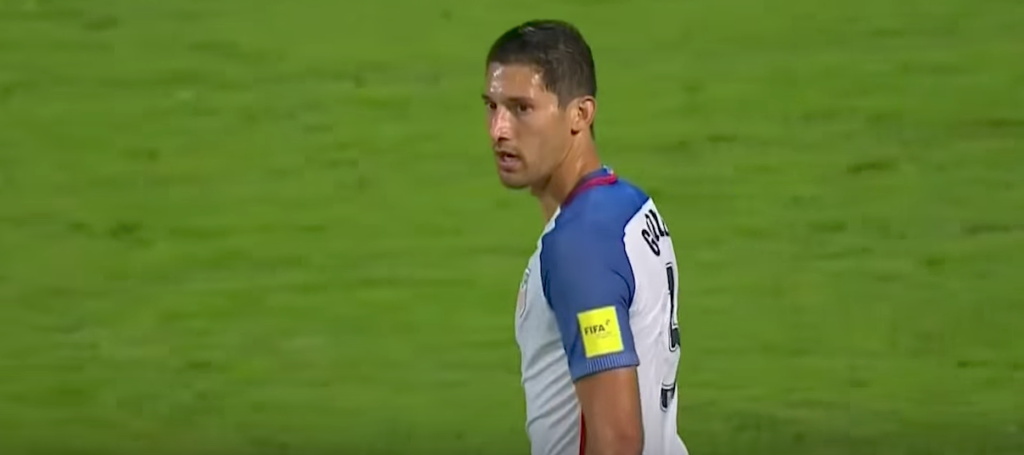
The US’s failure to qualify for the 2018 World Cup has left me hurt, confused, sad, and angry. But instead of asking what happened or where it all went wrong, I wanted to break down the own goal that helped Trinidad & Tobago win 2–1 in that decisive World Cup qualifier.
In the 17th minute, T&T’s Alvin Jones finds himself on the right side of the pitch with the ball at his feet. He’s looking to create as much space as possible between him and US defender Jorge Villafaña in order to whip in a cross (which ends up happening a bit too easily, in my opinion). At this stage in the match, inside the first 20 minutes and with the score tied 0–0, I expect the US to have a lot more pressure on the ball. Instead they seem to be a little more passive defensively and this is most evident in Villafaña and Nagbe’s pressure on Jones.
In this situation, the US has a 2-v-1 advantage defending Jones and therefore should have this play under control. The 2-v-1 advantage gives Villafaña two options defensively: 1) to show Jones the line and make him beat him wide, or 2) to show him inside towards Nagbe, where they can collapse on him together and pressure him into a turnover. These are situations that teams will talk about in the or days leading up to the match (and details we as players have drilled into us from a young age). For players at the international level these types of movements and pressure should come naturally. However, in this case, they somehow fail to do both.
Neither Villafaña nor Nagbe are quick enough to close the space on Jones, while Villafaña even manages to turn his back to the ball as it’s being whipped in—an important moment that I feel has been overlooked while discussing this play. As defenders, it is important to keep your body square to the ball and your chest in line with the ball. When the cross is coming, you want to keep your body as big as possible to block the ball by any means necessary. Here, Villafaña does the opposite. He turns his back to the ball which significantly reduces his chances of blocking the cross. This lack of attention to detail sets the tone for the rest of this play.
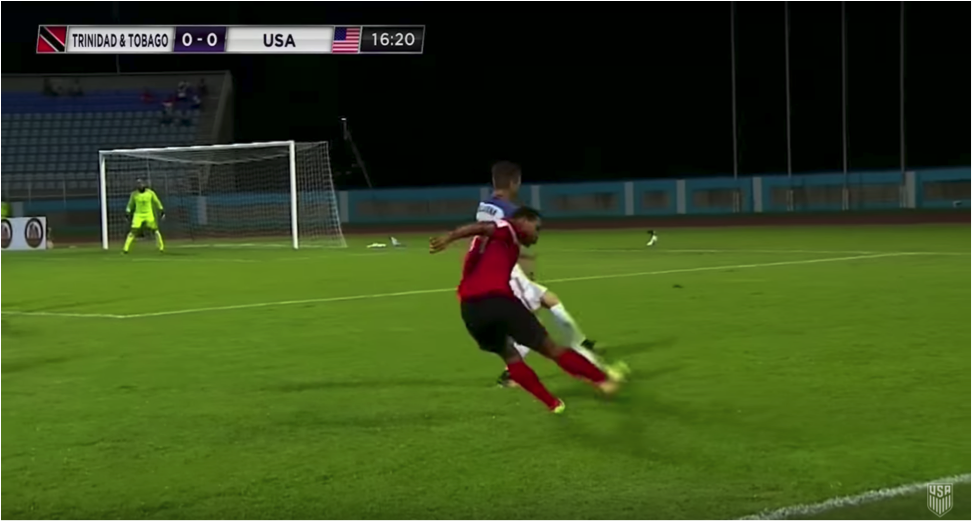
As Jones puts his head down to cross the ball, it’s important that both US central defenders, Matt Besler and Omar Gonzalez, are anticipating the cross and getting themselves in position to defend the ball. This means that they are in an athletic position (legs bent, roughly shoulder width apart), have their eyes on the ball, and are goal-side of the T&T attackers. Besler does this well but Gonzalez looks a bit too lackadaisical, as you can see below.
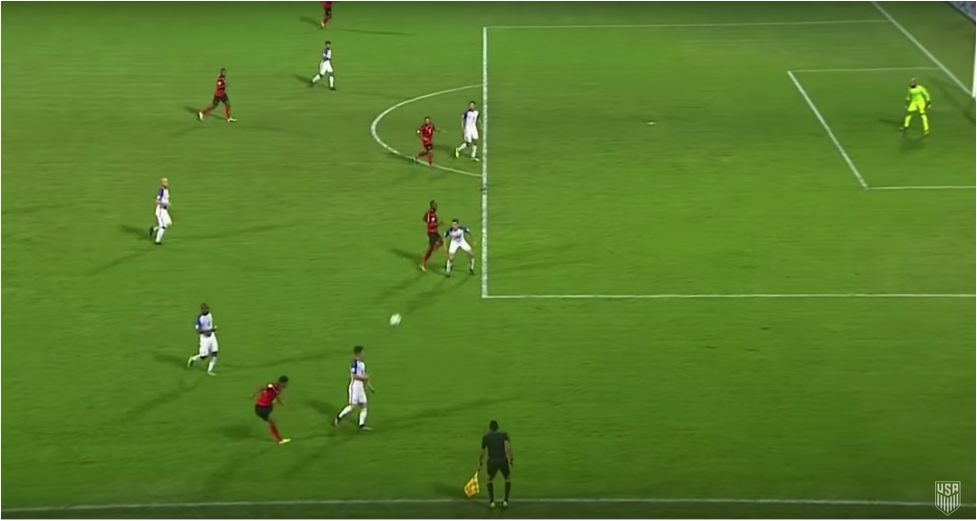
This lack of preparation by Gonzalez is what leads to the biggest mistake in this play. As the ball is whipped in, Gonzalez gets pressured by the T&T striker, Shahdon Winchester, which causes him to panic as the ball is sent in. This leads to Gonzalez being forced to speed up his mechanics, while under stress, which ultimately leads to a botched clearance that is sent toward his own goal instead of into the stands.
When you’re on the field of play, this is a deadly combination and usually leads to errors even for the best in the world. That’s why preparation is so important. As a defender, you must always be thinking about the worst case scenario in order to put out fires before they get a chance to spread. Here, unfortunately, Gonzalez is caught flat-footed and it shows in his unorthodox clearance attempt with his weak foot.
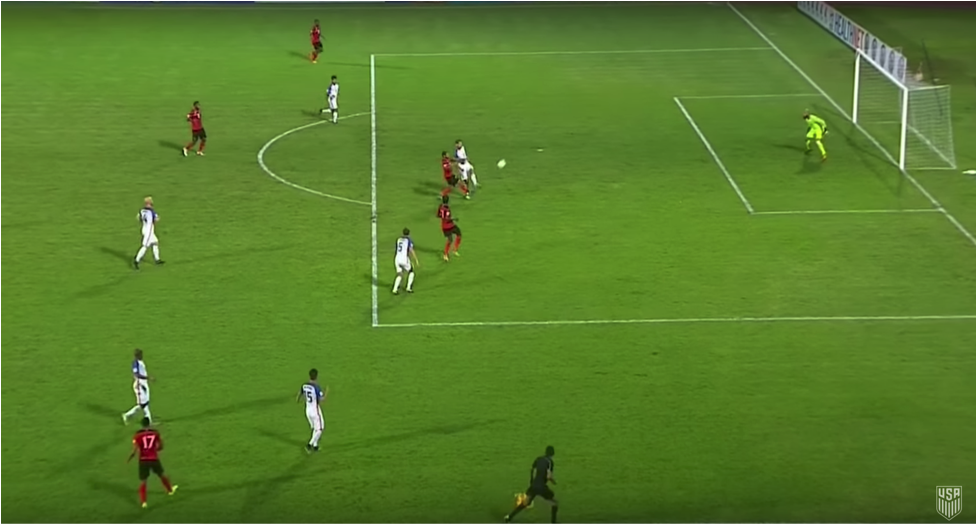
As the ball is heading toward goal, we get to the final error that leads to this own goal: Tim Howard’s footwork.
Throughout this play Howard’s positioning is actually pretty good. When Jones has the ball out wide, Howard is in an athletic position, off his line, and angled out wide where he can see both the ball and his backline. This is important for a goalkeeper because, as we talked about with Gonzalez, you must be prepared to put out fires before they happen. If the ball is sent in around the top of the six-yard box (give or take a few yards), he will be there to help his defenders by claiming the cross.
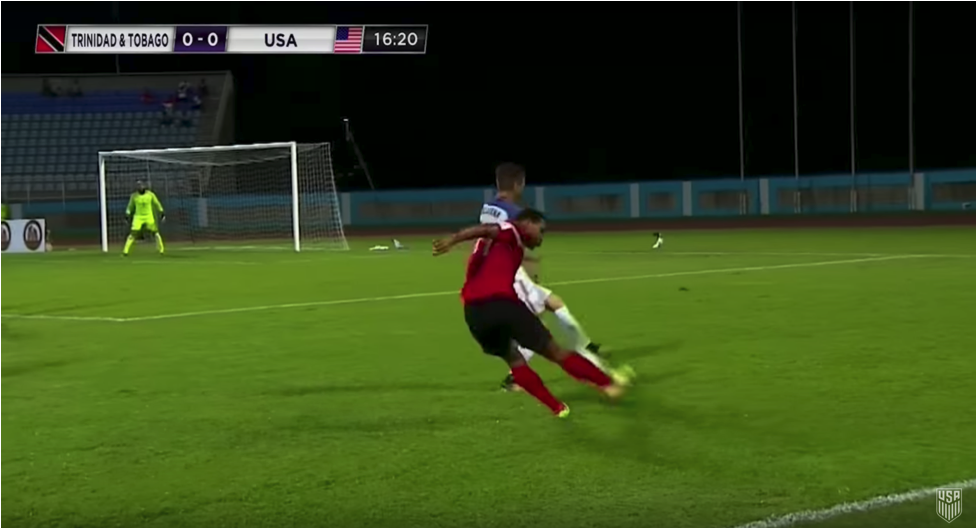
As the ball is crossed into the box and Howard realizes that it isn’t a ball he can come out and claim, he adjusts his positioning to follow the path of the ball across the box. He takes a little drop step with his right foot and shuffles with his left foot, allowing him to get square with the ball and into his set position—hands at his waist, knees bent, and feet shoulder width apart. So far so good.
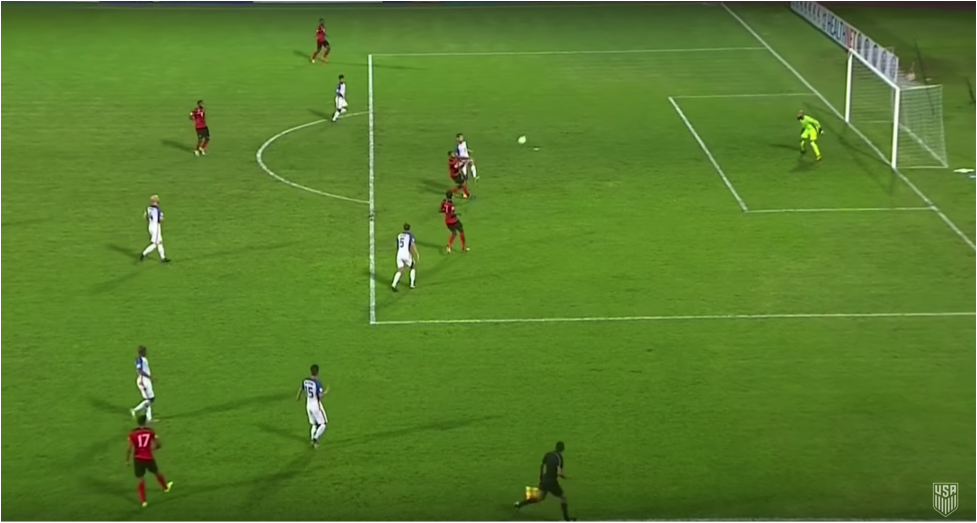
Now we get to the heart of the play for Howard: His footwork. Footwork (in addition to positioning) is the key foundation to any save that a goalkeeper will make.
As the ball slices off Gonzalez’s foot, Howard must assess—in a split second—the pace of the ball and its overall trajectory toward his goal. Howard analyzes the play in front of him and instantaneously decides he must take a small drop step and then push off backwards to make a play on the ball. This is where Howard miscalculates how much time he has to react to the slicing shot. This leads to him flailing backwards and flapping at the ball over his head, looking absolutely helpless.
If he takes another drop step or two, something he most certainly has time for, he probably makes the save. Instead he misreads the flight of the ball, in addition to the pace of the shot. Ultimately his footwork lets him down and doesn’t give him the best chance to make this save.
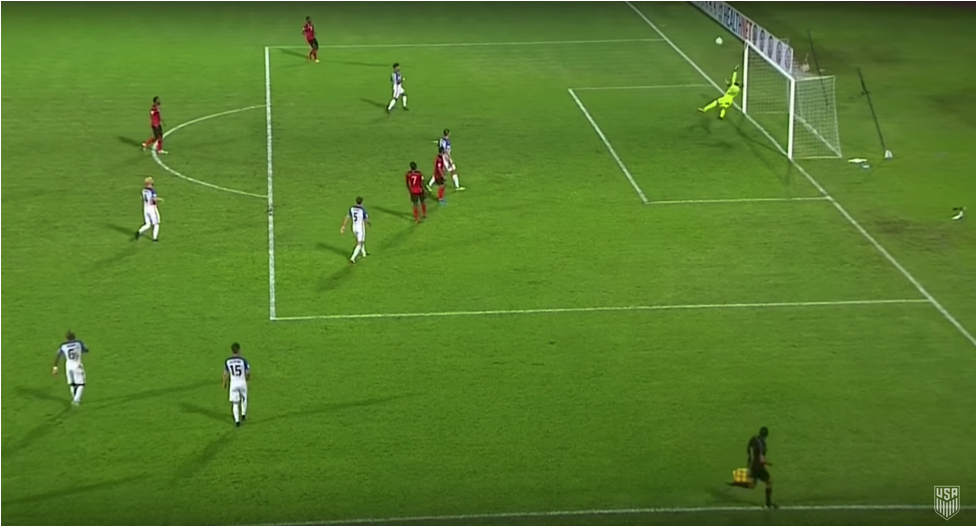
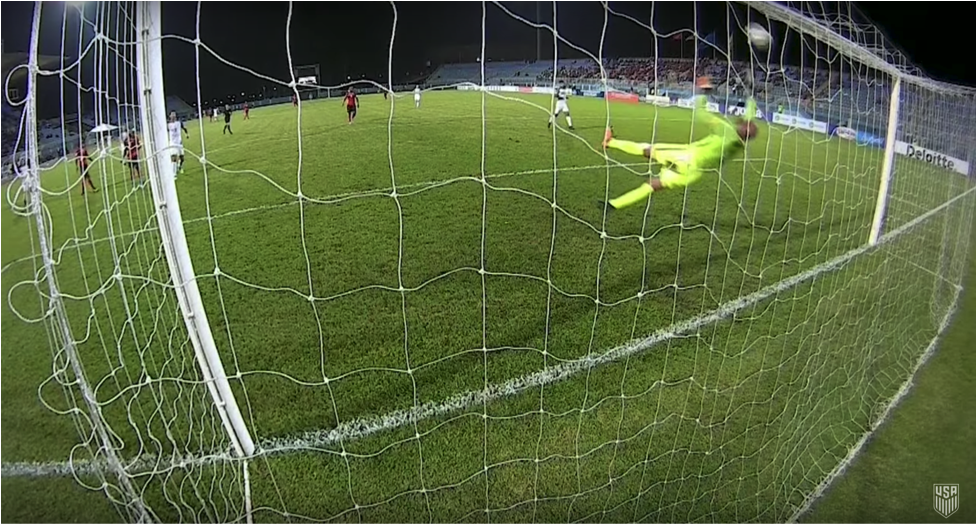
As miscalculated as Howard’s attempt on the ball is, it’s actually pretty understandable how easy it is to make a footwork mistake on this play, even though I believe a goalkeeper of Howard’s quality should make a better attempt on the ball.
When a goalkeeper gets set for a shot, the muscles are activated and ready to fire, because most of the shots will come with pace. If the ball had come more directly on goal, even to either side of Howard, he probably would have made this save. Mishit shots like this one cause goalkeepers lots of problems.
In the 17th minute, Howard is set and in a proper ready position. It’s only as the ball is mishit from Gonzalez—the ball is looping slowly towards the goal with lots of spin, which, in turn, makes it difficult to judge its overall trajectory towards the goal—where things start to break down for Howard. That’s why it’s important to stay composed and calm in these situations, in order to allow yourself a clear mind to process the information in front of you. However, when you get thrown an unexpected curveball, like Howard does here, you can understand how miscalculations can happen—even to a goalkeeper of Howard’s quality.
If only the US was a little more proactive and switched on in their defending, maybe—just maybe—we would be looking at a different result for World Cup qualification. Nevertheless, hypotheticals do us no good and, unfortunately, we now have four and a half years to prepare for the next major tournament. I don’t know about you, but I think I need a beer.
Follow Matt on Twitter @MattPyzdrowski.
